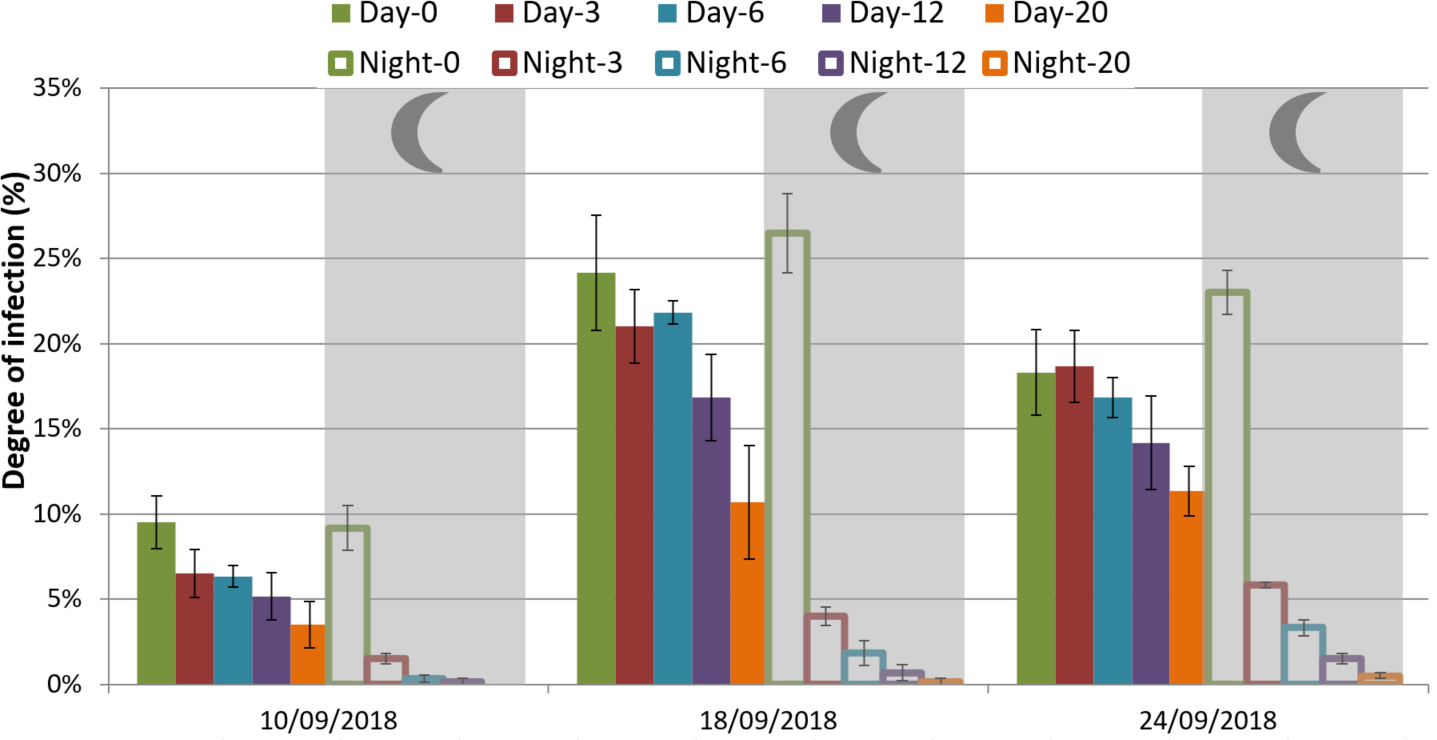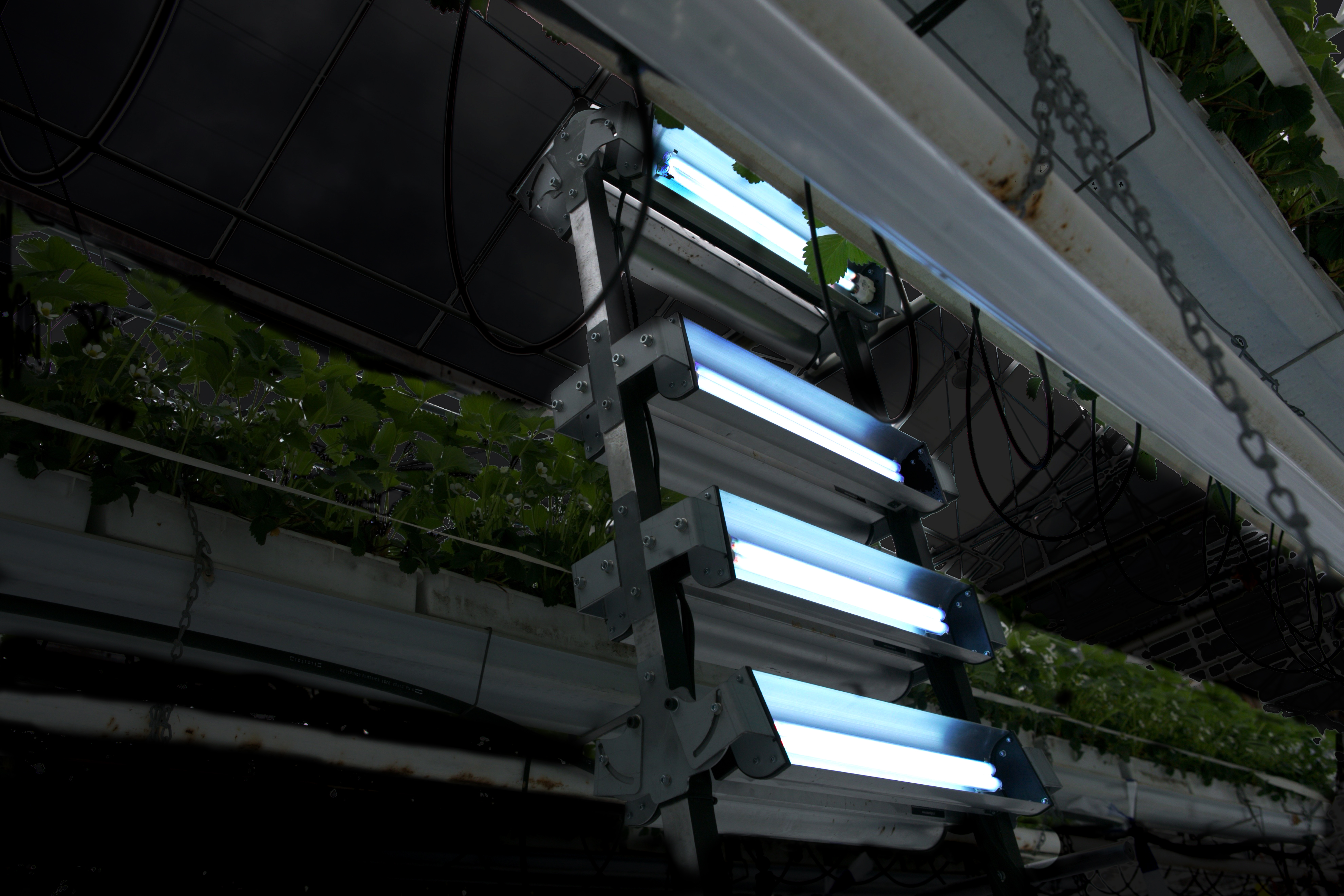Mildew control with UV-C is already well documented in strawberry where repetitive treatments can achieve a remarkable disease control. Mildew is suppressed by the curative action of ultraviolet C light. DNA lesions caused by the high intensity radiation are lethal for mildew and therefore fungal development is arrested.
Fungi, however, developed the ability to repair this DNA damage. Indispensable for the recovery is sunlight, which provides the necessary photon for the enzymatic repair of the damaged DNA. In other words, when UV-C is applied during the day sunshine will activate the fungi to (partly) repair the damage. This means that during the day some of the treatment is undone. In contrast, in the absence of light this repair is prevented and therefore UV-C should be more efficient when applied at night. A first trial was set up to compare the application at daytime and nighttime.
A strawberry cultivation under glass planted in July was subjected to four doses of UV-C light applied either at noon or after sunset. The UV-C treatment took place on Monday, Wednesday and Friday and lasted from the end of July until the middle of September. Plants were weekly inspected for their degree of mildew infection. The disease pressure of a natural mildew infection increased from the beginning of September, the graph below shows the results.


